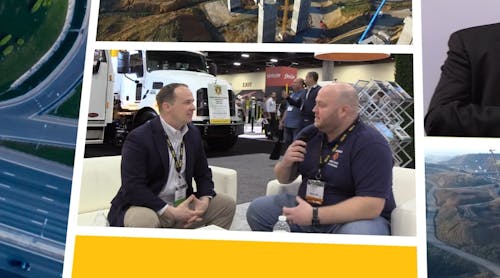When portions of two busy Kansas interstates, I-70 and I-635, were due for repair, the Kansas DOT (KDOT) needed a patching solution that would help accelerate the project and minimize road closures. Because I-70 is a major highway and I-635 is a heavily traveled spur, the patching needed to be completed between 8 p.m. and 5 a.m. so the roadway could open before the morning rush hour.
Like many state transportation departments, KDOT had been using concrete with a high content of type I/II portland cement for their repair projects. Although KDOT did not specify the concrete when seeking bids, the project plan originally called for a portland cement-based concrete with a high dose of admixtures, which would be needed to achieve early strength.
“Portland cement doesn’t gain strength rapidly,” said Matt Ross, engineer for CTS Cement. “It also has high shrinkage.”
RA Knapp Construction, the contractor awarded the two patching projects, proposed Rapid Set cement as an alternative solution. Rapid Set cement is a calcium sulfoaluminate (CSA) cement developed to address some of the shortcomings of portland cement. Unlike concrete with a high portland cement content, Rapid Set cement has early strength gain and very low shrinkage. This can lead to better durability and a longer life expectancy. And, the fast-setting properties enable crews to perform considerably more work, while still completing the project on time.
KDOT field engineering administrator Amy Pope said that prior to RA Knapp’s proposal, KDOT had previously approved Rapid Set cement in bag mix, but never for bulk use. After the project was completed, they wrote specifications for future use and deemed the project a success.
“We did much more patching and we did finish on time,” Pope added.
Rapid Set cement has been used in U.S. road and bridge concrete projects for nearly 50 years, and an estimated 2 million tons of Rapid Set cement have been used in the U.S. Because it develops strength more quickly and shrinks less than conventional portland cement concrete, it is often used in fast track pavement rehabilitation projects. It is common in densely populated areas, highways, airport pavements, bridge decks, and other projects where extended closures are not possible.
“Rapid Set cement costs a little more money, but if you take into consideration inspection costs and the costs of traffic control, you can shorten those work windows and have a project that is more durable,” Ross said. “You should get longer life out of those pavements.”
Using the Rapid Set cement, RA Knapp was able to get 2.3 times the production in the same eight-hour time frame. The two patching projects, totaling $2.7 million in completed work, were finished on time in the fall of 2019. Following these two interstate projects, KDOT has now added Rapid Set cement to their general patching specifications.
“Kansas saw how well it performed, the fast setting properties, and they were able to open pavements early,” Ross said. With Rapid Set, “your whole project will be accelerated and will be open to travel on time and ahead of schedule.”









